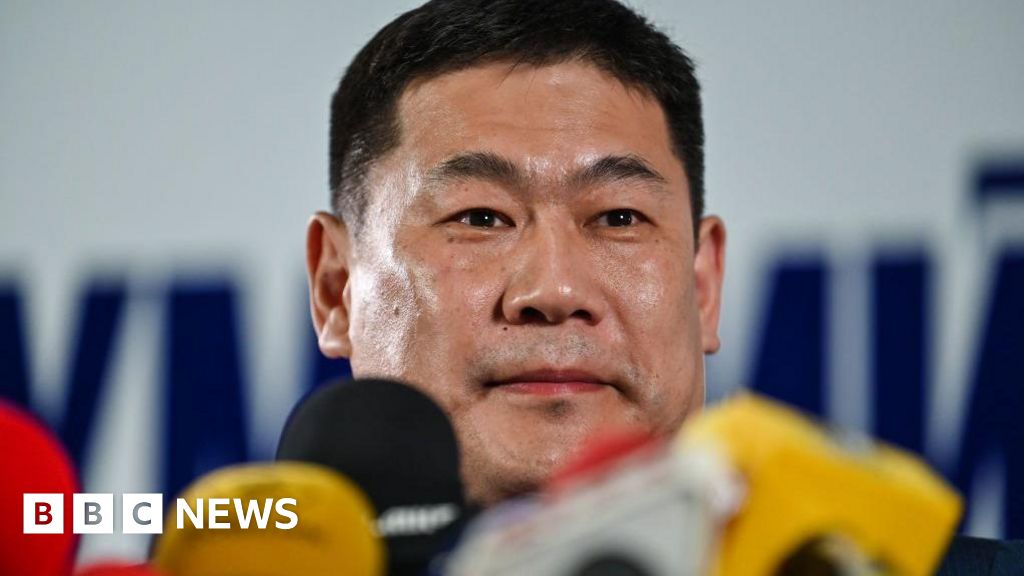ARTICLE AD BOX
The Supreme Court on Monday allowed President Trump to move ahead with mass firings and deep cuts at the Education Department, setting aside a lower court’s ruling that put the administration’s plans on hold.
In a brief order, the justices said the ruling of a federal court in Massachusetts is stayed while the case develops further.
The result is that Mr. Trump can reduce the force and terminate more than 100 grants.
“Today, the Supreme Court again confirmed the obvious: the president of the United States, as the head of the Executive Branch, has the ultimate authority to make decisions about staffing levels, administrative organization, and day-to-day operations of federal agencies,” Education Secretary Linda McMahon said.
Justice Sonia Sotomayor led the court’s three Democratic appointees in dissenting. She said Mr. Trump was trying to abolish the department on his own and that her Republican-appointed colleagues were enabling him.
“The majority is either willfully blind to the implications of its ruling or naive, but either way, the threat to our Constitution’s separation of powers is grave,” she wrote.
The ruling is the latest in a string of victories for Mr. Trump at the high court, where the conservative majority has set aside several lower-court rulings, usually issued by Obama or Biden appointees, halting the president’s expansive agenda.
Although the rulings aren’t final decisions, they have allowed Mr. Trump to fire agency heads, expand deportations and cut the bureaucracy.
Ms. McMahon said she is eager to move ahead with her plans.
“We will carry out the reduction in force to promote efficiency and accountability and to ensure resources are directed where they matter most — to students, parents, and teachers,” she said.
She said her department will “continue to perform all statutory duties.”
A coalition of local school districts and left-leaning education associations had sued to stop the cuts. They said the Supreme Court ruling would allow the department to be dismantled.
“This unlawful plan will immediately and irreparably harm students, educators and communities across our nation. Children will be among those hurt the most by this decision,” the coalition said in a statement.
Some conservatives have long wanted to shut down the department. Mr. Trump issued an executive order directing his administration to carry that out to the maximum extent allowed under the law.
However, Solicitor General D. John Sauer told the justices that the reductions in force were not about that.
He said Mr. Trump knows he can’t abolish the department independently but maintains significant authority to adjust its spending priorities. The courts trampled on that authority with their interference, he argued.
“The Constitution vests the Executive Branch, not district courts, with the authority to make judgments about how many employees are needed to carry out an agency’s statutory functions, and whom they should be,” he said.
U.S. District Judge Myong J. Joun, a Biden appointee who sits in Massachusetts, issued an injunction against the cuts in May. He said Mr. Trump’s defense that he was reorganizing rather than abolishing the department was “plainly not true.”
He said the cuts were so deep that they crippled the department’s ability to carry out the duties assigned to it in law by Congress.
He noted the Office of Civil Rights, where staff has been cut in half and seven of 12 regional offices have been shuttered.
Judge Myong said those closures have left the Office of Civil Rights unable to perform the kinds of audits required by law. In one case, a 12-year-old who claims harassment at school has been unable to return until the Office of Civil Rights completes an investigation, but the probe was halted during the staff cuts.
His ruling clashed with one issued by another federal judge who found the Office of Civil Rights, while trimmed, can still meet the minimum activities required by the law.
The high court issued its ruling on what is known as the “emergency” or “shadow” docket. Those are cases that speed to the court in a preliminary posture, without full rulings by a lower circuit court of appeals and often with only a preliminary injunction by the district court.
That means the high court acts without the benefit of full briefing and oral argument and usually doesn’t issue opinions explaining its reasoning.
Justice Sotomayor has complained about the court’s trend of emergency docket rulings that benefit Mr. Trump.
“The president must take care that the laws are faithfully executed, not set out to dismantle them,” she said.
Mr. Trump has argued that education decisions should be left to states, rather than imposed nationwide by an imperious federal government.
He pointed to Biden administration mandates on LGBTQ and diversity, equity and inclusion issues as ways the federal government can go astray.

 6 hours ago
5
6 hours ago
5








 English (US) ·
English (US) ·